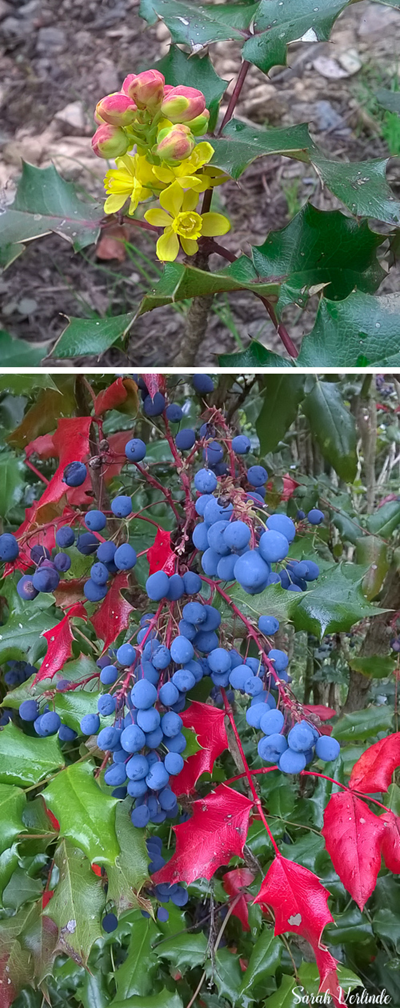Tall Oregon Grape
Mahonia aquifolium – Tall Oregon Grape
At a Glance:

- Synonyms (older names): Berberis aquifolium
- Family: Berberidaceae
- Plant Type: evergreen, erect shrub
- Distribution: Mostly Pacific Coast, California to British Columbia
- Habitat: shrub steppe slopes/dry areas and open woodlands, full sun to partly shady
- Height: up to 6 feet tall
- Flowers/Fruits: yellow flowers growing in clusters. Berries are round and purple-blue with a whitish hue.
- Flowering Season: March – May
- Leaves: Compound leaf (one stem with many leaves) oppositely arranged. Leaflets are glossy and dark green (similar to holly) with a prickly and wavy margin (edge). Underside is a lighter green.
- Generation: Perennial
- Notable feature: This is one of the PNW early bloomers. If you see yellow blooms in early spring, it is probably this plant!
Restoration and Conservation
Oregon grape is a fairly easy plant to grow and cultivate and makes a great garden or restoration plant. It’s used in restoration plantings, common at parks and roadsides. The flowers are yellow and quite fragrant which attracts pollinators during the spring. The berries are a great food source for birds and mammals during the summer and fall.
Ethnobotany
Mahonia aquifolium and M. nervosa contain alkaloid compounds including berberine which has been used for medicinal uses supporting immune health and strong antibacterial properties. Native Americans harvested and used the sour berries as a food crop and used the roots for yellow dye.
References and Resources
- PFAF: Plants for a future [Internet]. c1996-2012 [cited 2019 Aug 10]. Available from: https://pfaf.org/user/plant.aspx?latinname=Mahonia+aquifolium
- WTU Image Herbarium: http://biology.burke.washington.edu/herbarium/imagecollection/taxon.php?Taxon=Mahonia%20aquifolium
This article was written by Sarah Verlinde. For questions regarding the UWB/CC Plant Tour, contact Sarah at severlin@uw.edu.
